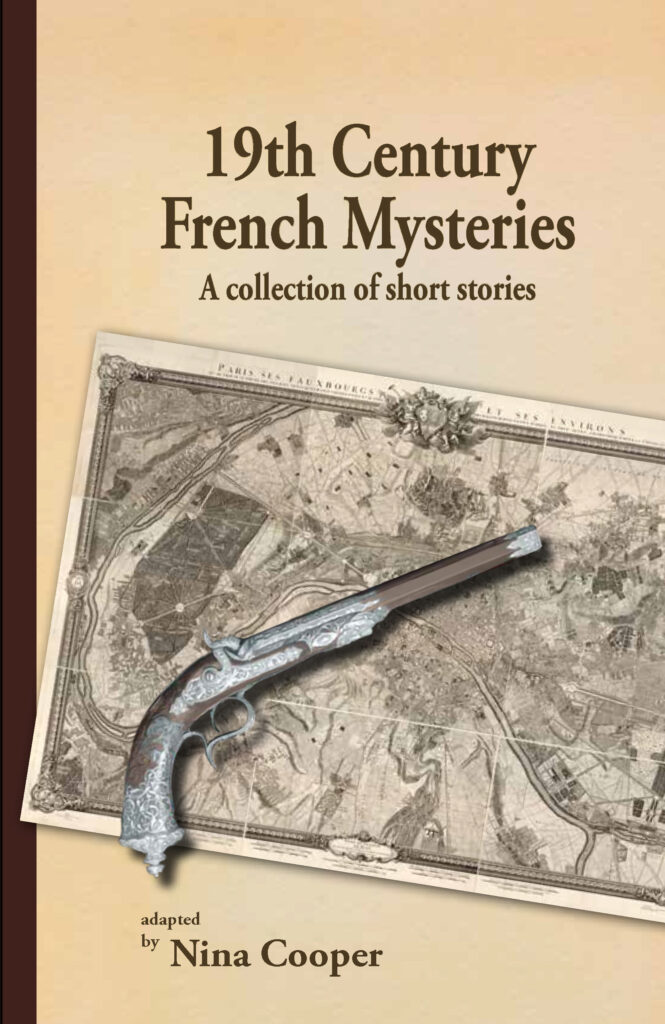
Adapted by Nina Cooper
ISBN 978-1937667214 $14.99
206 pages tradepaper
Available everywhere books are sold.
Paris, late 1880s…the era of “lions,” of extreme wealth versus extreme poverty, of class differences that don’t mix — or do they? And when they do? Murder, mayhem, love lost, fortunes lost… What could go wrong?
The modern detective story, today the mainstay of movies, television series, and popular literature, evolved over a period of more than forty years. In the late 1880s, competition among newspapers created a new type of writer, the feuilletoniste, who contributed on a regular basis within the time restraints of a deadline. Their stories, “leaves,” were inserted into newspapers to introduce the man in the street to exciting, serialized stories, and to keep readers buying the same newspaper week after week. There were many feuilletonistes, many familiar today to the English and French reading public, but not known to them primarily as feuilletonistes. Most of those well known, whose contributions were later published as novels, did not concentrate exclusively on the law or those in opposition to the law, and contributed only marginally to the creation of the detective story.
However, elements of the modern detective story flowed through the works of three feuilletonistes, changing over a relatively short time, and culminating in the “roman judiciaire.” Those writers were Paul Féval, Emile Gaboriau, and Fortuné du Boisgobey. Within are six stories from several French feuilletonistes and writers, Emile Gaboriau, Julien Green, Melchoir Frédéric Soulié, and Hector Fleischmann.